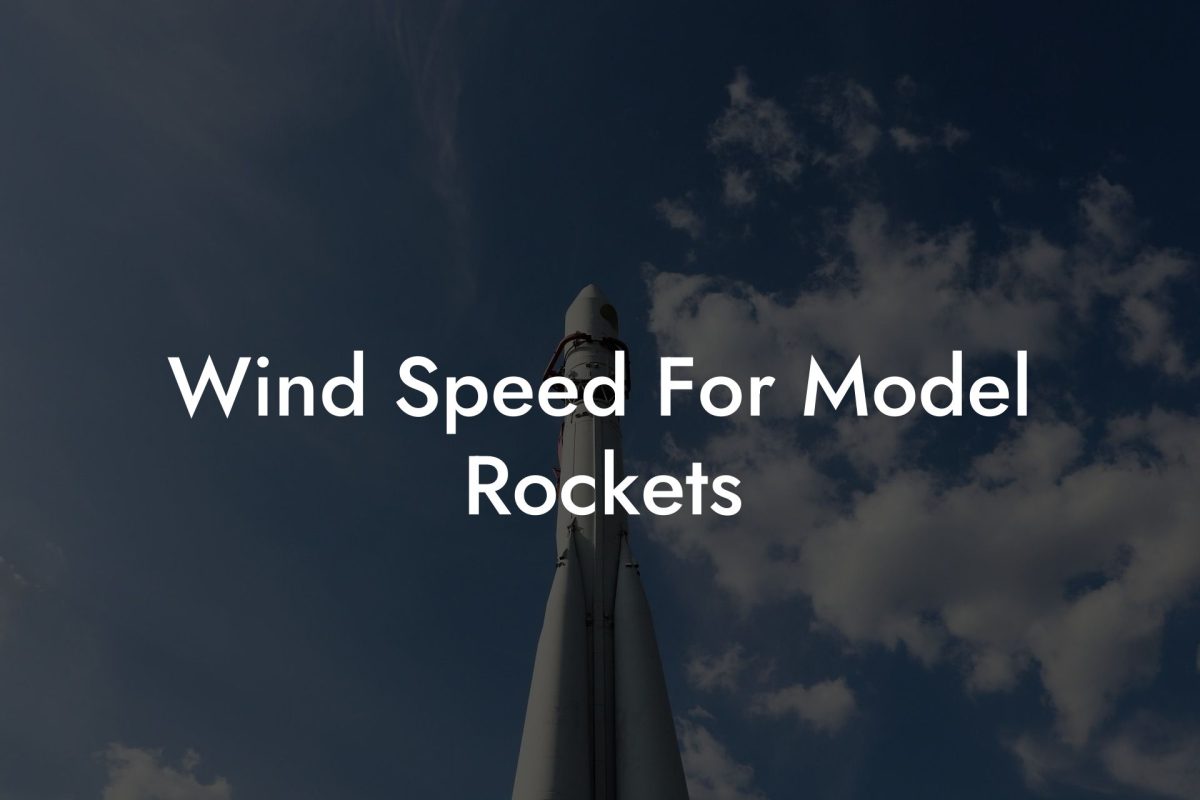Model rocket enthusiasts often graduate from small, beginner rockets to much larger, more powerful models to quench their thirst for adventure. This transition is not without its challenges, as large-scale rockets require more advanced building skills, intricate knowledge, and, of course, safety precautions. In this guide, we'll take you through everything you need to know about large-scale model rockets, giving you the confidence you need to take your hobby to new heights.
Large Scale Model Rockets Table of Contents
Understanding Large Scale Model Rockets
Large scale model rockets, or high-power rockets, typically use motors with more than 160 Newton-seconds of total impulse. They can reach altitudes of several thousand feet, depending on their design and motor size. High-power rockets can weigh up to several hundred pounds and require extensive knowledge and certifications to build and launch safely.
High-Power Rocket Motor Classification
Rocket motors are classified based on their total impulse output, measured in Newton-seconds. These are commonly labeled with letters from A to O, with each successive letter representing a doubling of total impulse. High-power motors fall under classes H to O:
- H: 160 - 320 Ns
- I: 320 - 640 Ns
- J: 640 - 1,280 Ns
- K: 1,280 - 2,560 Ns
- L: 2,560 - 5,120 Ns
- M: 5,120 - 10,240 Ns
- N: 10,240 - 20,480 Ns
- O: 20,480 - 40,960 Ns
Building Large Scale Model Rockets
Constructing a high-power rocket is no easy task, and it is vital to have a solid understanding of rocketry principles and materials. Some key facets of building large scale model rockets include:
- Selecting appropriate materials such as G10 fiberglass or carbon fiber for airframes and fins.
- Designing and assembling a robust recovery system, often using parachutes or dual-deployment methods.
- Implementing electronic components, such as altimeters and GPS trackers, to ensure a successful and safe flight.
- Adhering to construction best practices, such as bonding and reinforcement techniques, to minimize the risk of in-flight failures.
Safety Precautions for High-Power Rocketry
As with any high-power hobby, safety should always be the top priority. Key safety precautions for high-power rocketry include:
- Joining a rocketry club or organization to learn from experienced enthusiasts and participate in organized launches.
- Obtaining proper certifications from organizations like the Tripoli Rocketry Association (TRA) or the National Association of Rocketry (NAR).
- Understanding and adhering to local, state, and federal laws and regulations related to high-power rocketry.
- Always being mindful of launch site selection, weather conditions, and recovery area size to mitigate risks.
- Using checklists and pre-launch procedures to ensure that all components are functioning correctly and safely.
Large Scale Model Rockets Example:
Imagine building a high-power, L-class rocket with a carbon-fiber airframe, advanced recovery system, and GPS tracking. This rocket, expertly constructed and tested, has the potential to reach an altitude of nearly 15,000 feet.
You begin by joining a local rocketry club and obtaining your Level 2 certification from the NAR. Following rigorous design and construction, you participate in a club-sanctioned launch event under the guidance of experienced rocketeers.
With proper pre-launch procedures, a clear understanding of safety precautions, and a well-planned recovery strategy, you successfully launch and recover your L-class rocket, enjoying the breathtaking thrill of high-power rocketry.
Embarking on the journey of high-power rocketry can be an incredibly rewarding experience, offering new levels of excitement and satisfaction. With the comprehensive guidance provided by Austin Rockets, you're now well on your way to conquering the skies with your large-scale model rockets. Don't forget to share this article with fellow enthusiasts, and be sure to explore our other expert rocketry guides to continually elevate your model rocketry expertise.













